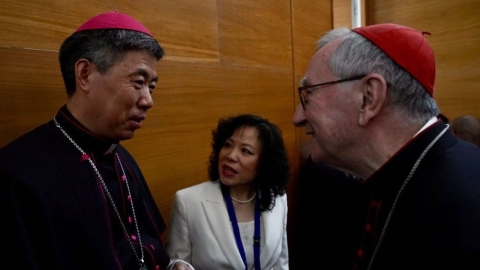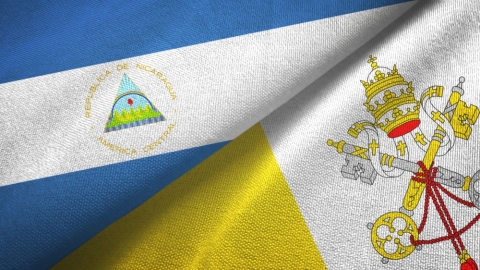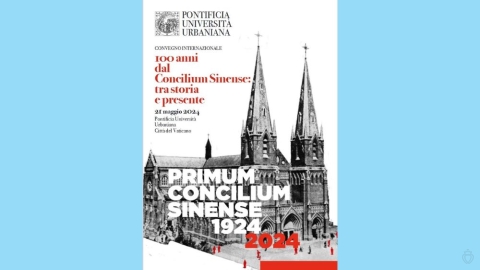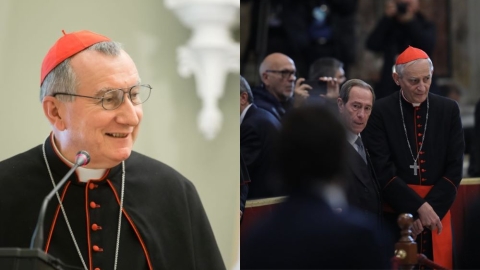Poland: Archbishop Gadecki Severely Criticizes the Synod
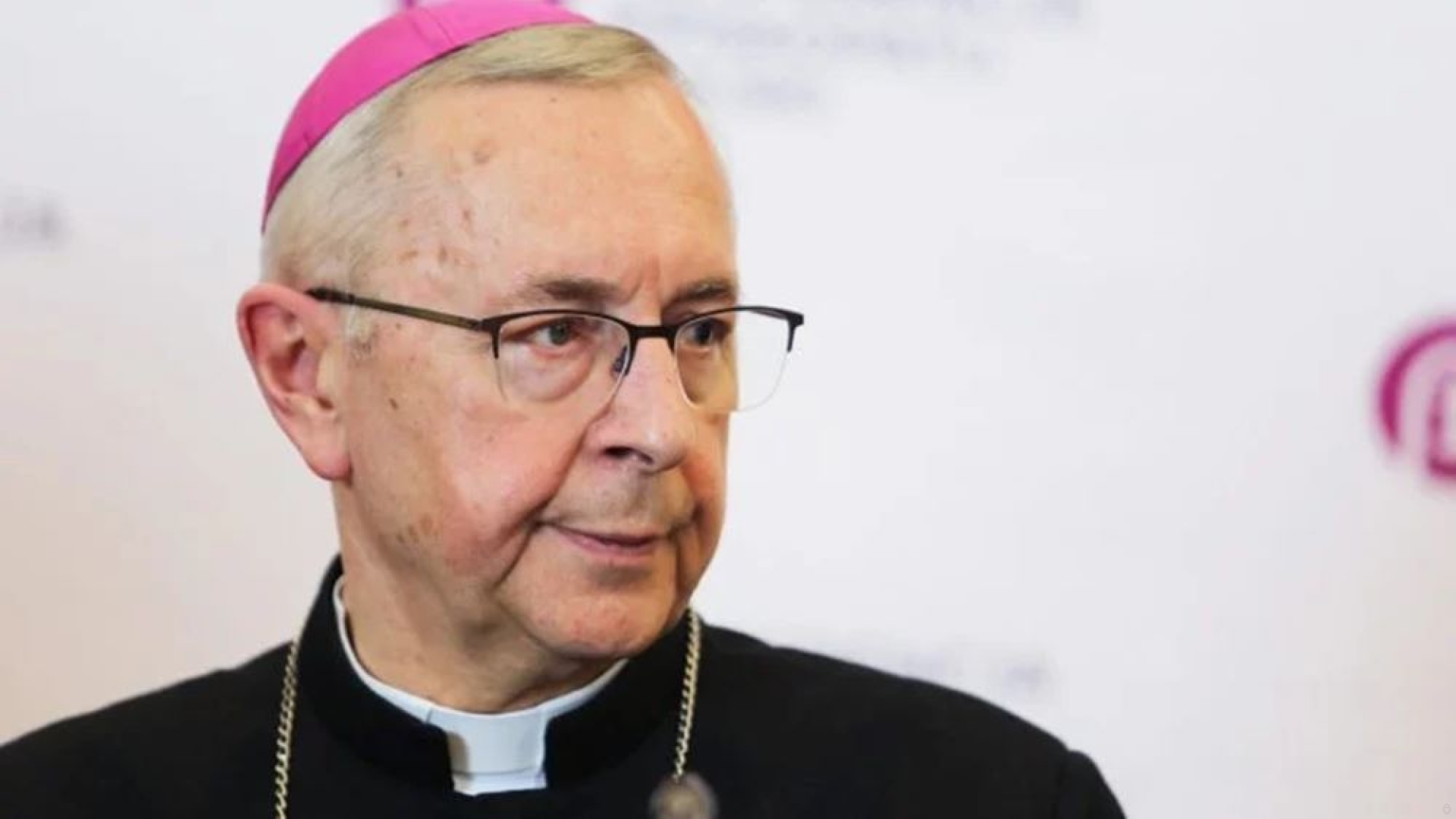
Archbishop Stanisław Gądecki
Stanisław Gądecki, Archbishop of Poznań and President of the Polish Episcopal Conference, gave a long interview to Catholic World Report where he analyzes the first part of the Synod on Synodality held in Rome. He makes numerous criticisms of substance and form.
On the Method
“Everyone was invited to participate, regardless of their attitude to the faith and the Catholic Church. As a result of this approach, sometimes the ‘non-Catholic’ voice was more audible than the ‘Catholic’ one,” notes the prelate. “The diversity of opinions and balancing on the verge of orthodoxy was also heard in Rome, which was partly reflected in the final document.”
Gadecki admits that it was system of small groups, where “there was no opportunity for authentic conversation. The requirement was to ‘listen without prejudice’ . . . but it does not serve dialogue, that is, a rational search for the truth.” And the specific issues “assigned to each table in advance… was equivalent to being excluded from the conversation on other topics.”
The Influence of the Laity
The prelate notes that “the Pope convened a synod of bishops, then the word ‘bishops’ was removed from the name and only the term ‘synod’ remained.” However, “such a reality does not exist either in canon law or the tradition of the Church. Therefore, ‘bishops’ were reinstated in the name of the event.”
The president of the Polish bishops' conference acknowledges that “less than 1% of Catholics probably participated in the entire consultation process.” But “the way in which the non-bishops were appointed raises questions” about what they were representing: church, diocese, or parish?
“The synod was to be dedicated to the issue of synodality, that is, seeking solutions on how to arrange the relationship between the various states of life within the Church, such as bishops, presbyters, religious men and women, and laity,” summarizes the prelate.
Intrusion of the Synodal Path
The Archbishop of Poznan reveals that “on the opening day of the synod, however, we all received by email the documents of the German Synodale Weg.” He accuses: “I read the mailing of the above documents as an attempt to disseminate the German problems across the Church. The documents draw profusely from Protestant theology and the language of modern politics.”
“From there comes the conviction that the Church should conform to the world by adopting a democratic system and the standards of a liberal bureaucracy.” The prelate asserts: “In Germany, we generally have a Church with an expanded bureaucracy. From this comes the desire to limit the power of the bishops and the intention to build a secular power structure parallel to the hierarchical one, as well as to introduce a secular supervision of the bishops.”
Gadecki recalls that “in one of his statements, Bishop Georg Bätzing said that he managed to include all German postulates in the draft final document of the Synod. So, there is a risk that the Synod Fathers, by voting on the final document next year, will in fact approve the demands of the Synodale Weg, albeit with a slightly different wording.”
On the Blessing of Homosexual Couples
The bishop is very clear: “A benediction in Latin (bene-dictio) means to call someone good. Benedictions or blessings of homosexual unions would mean that the Church approves of the lifestyle of homosexual partnerships, . . . which means sex between same-sex couples. What has always been defined as a sin. . . would now become something positive.”
The prelate recalls the distinction between homosexual inclinations and homosexual acts. The first, although disordered, are not considered sinful. “The latter are sinful and, in the words of the Catechism, ‘will in no way be approved by the Church.’ The Church calls persons with homosexual inclinations to a life of chastity,” always possible with grace.
He emphasizes that people with these inclinations and who follow God's commandments find it “painful . . . that in pastoral practice they no longer encounter the Church’s more and more often. There they often encounter a typification that corresponds with the language of the LGBTQ+ movement, but has nothing to do with the reality of their lives and even rejects it,” he explains. “These people . . . feel abandoned by the Church.”
The prelate notes that “representatives of the American Courage group – which helps people with homosexual tendencies to sanctify themselves – were not invited to the synod.. . . Representatives of other currents were included instead.”
On the Female Diaconate
Archbishop Gadecki recalls that “this topic recurs three times in the synthesis report.” But they talk about the ban on gender discrimination. “This argumentation suggests that what is at issue here is not the diaconate, but rather the position of women in the Church.” The bishop explains “women were deaconesses because of women’s baptism by immersion. Modesty required that men not assist in this act.”
As for the deaconesses introduced into the Maronite Church in 1736, their functions involved charitable activities. “Among other things, they were forbidden to approach the altar and administer Holy Communion even in the absence of a deacon.” He notes that without the diaconate, women today are allowed much more in the Church than Maronite deaconesses.
The Celibacy of Priests
Archbishop Gadecki defends priestly celibacy. “The radicalism of giving up the beautiful form of human love—marriage and family—is the sign that God is an absolute necessity for all of us to fulfill human destiny. Who is to show this truth if not the pastors of the community?”
Inclusion
“Although ‘inclusion’ was often repeated in the Synod Hall, few people are wondering what it means” said the bishop. “Before it reached the Synod Hall, the term was clearly defined in the language of secular politics. We should not associate it only with ‘all-inclusive’ holidays, but also with the International Planned Parenthood Federation and the UN Women’s agenda. The documents of these institutions are unequivocal in their undermining the binary division of sex,” that is, the distinction between men and women.
“The question arises: Was the Lord Jesus’s teaching inclusive or exclusionary?” Jesus “told the truth, also the uncomfortable one for the listeners. ‘You belong to your father the devil” (Jn. 8:44) – these were not random words. Radical inclusion was not His highest priority, as seen when many disciples left after His speech about the Bread of Life” (Jn. 6:66)
“St. Paul commands the Christians in Corinth to exclude the incestuous person from the community by stating: “You are to deliver this man to Satan for the destruction of his flesh, so that his spirit may be saved on the day of the Lord” (1 Cor 5:5). Then he adds that they should ‘not even eat with such a person’ (1 Cor. 5:11). Certainly, the Gospel of Jesus was offered to everyone.. . However, the invitation of the Lord Jesus. . . comprised a call to conversion and penance.”
Social Sciences Taken as Sources of Faith
Very rightly, the bishop, visibly upset, asserts: “The word ‘inclusivity’ definitely does not fit into Christian theology. It comes to us from the social sciences.. . The Church professes the infallibility of the pope. At the same time, one can get the impression that some theologians and bishops believe in the infallibility of social sciences, and not even the sciences, but some mainstream sociologist and theories, which in a few decades will only be mentioned in history textbooks.”
Gadecki targets the Report (III, 15, g) in which “sentences such as ‘the anthropological categories we have developed are not sufficient to grasp the complexity of the elements arising from experience or scientific knowledge’ stem either from an unconscious inferiority complex or from a superstitious approach to science.”
Doctrinal Confusion
Archbishop Gadecki explains the dubia of the five cardinals: “It seems that the dubia were primarily a reaction to the postulates of the Synodale Weg, which had been by the Vatican several times previously. I think their fundamental meaning boils down to doubts about how changes in Church teaching are introduced.”
“On the one hand, we have declarations that nothing changes. . . On the other hand, we have understatements on the part of Pope Francis, which are sometimes interpreted differently by different theologians and bishops.. . . The faithful need clarity in matters of faith and morality. The point is for the Pope to express his position clearly, not by ‘winking’ to those on the left or right.”
(Sources : CDR/InfoCatolica – FSSPX.Actualités)
Illustration : Flickr / Episkopat Polski

